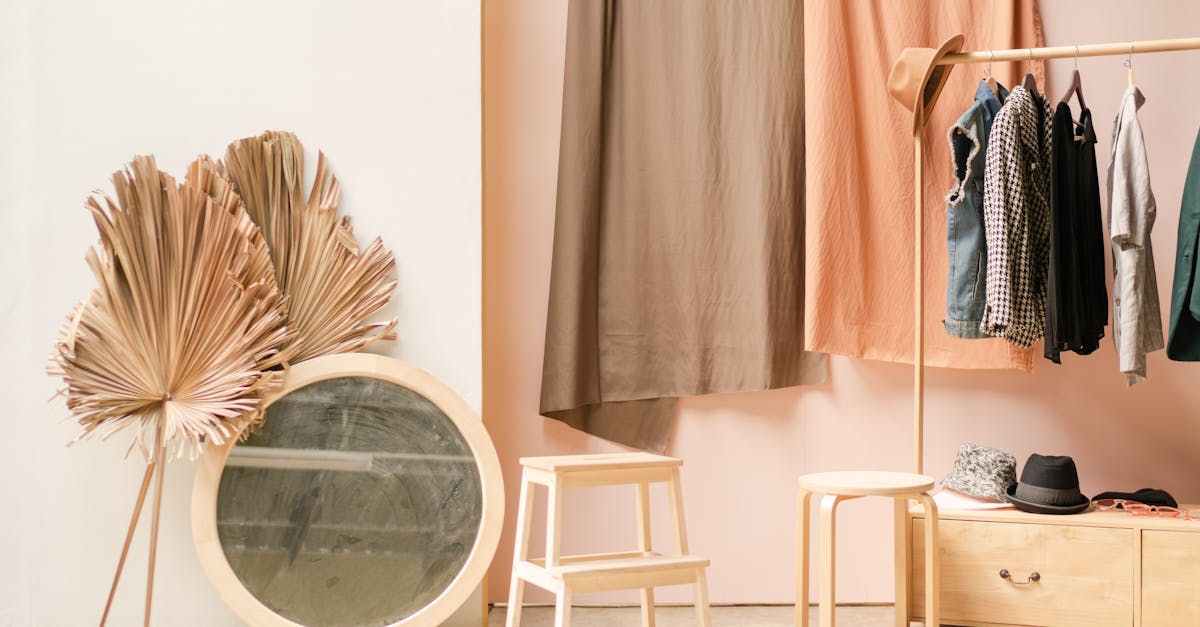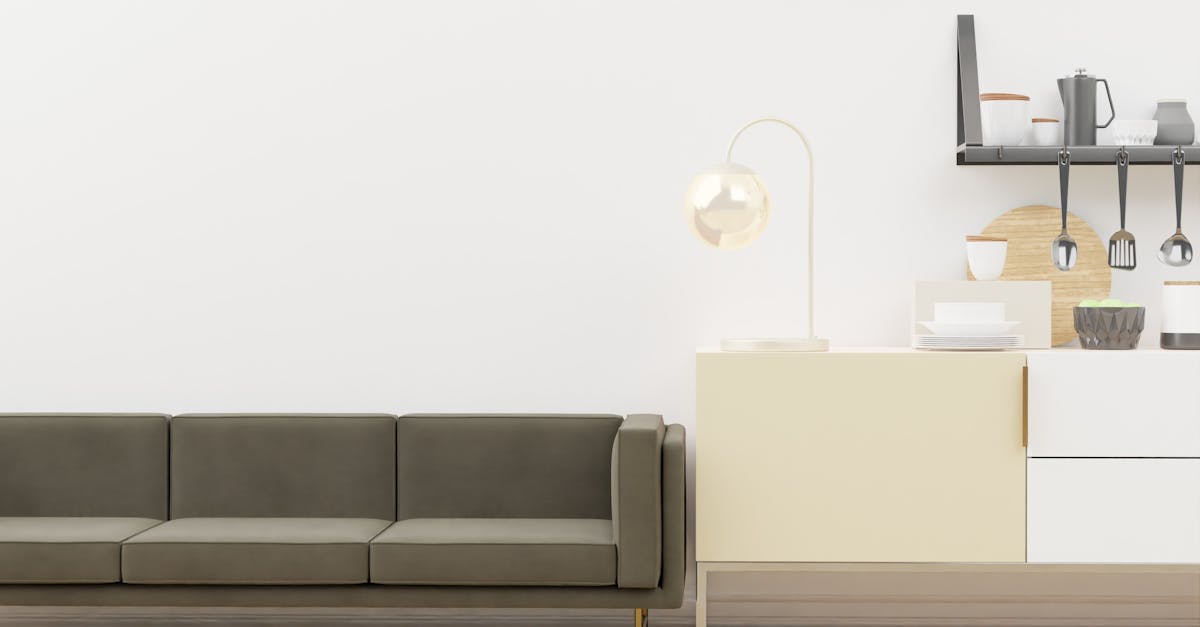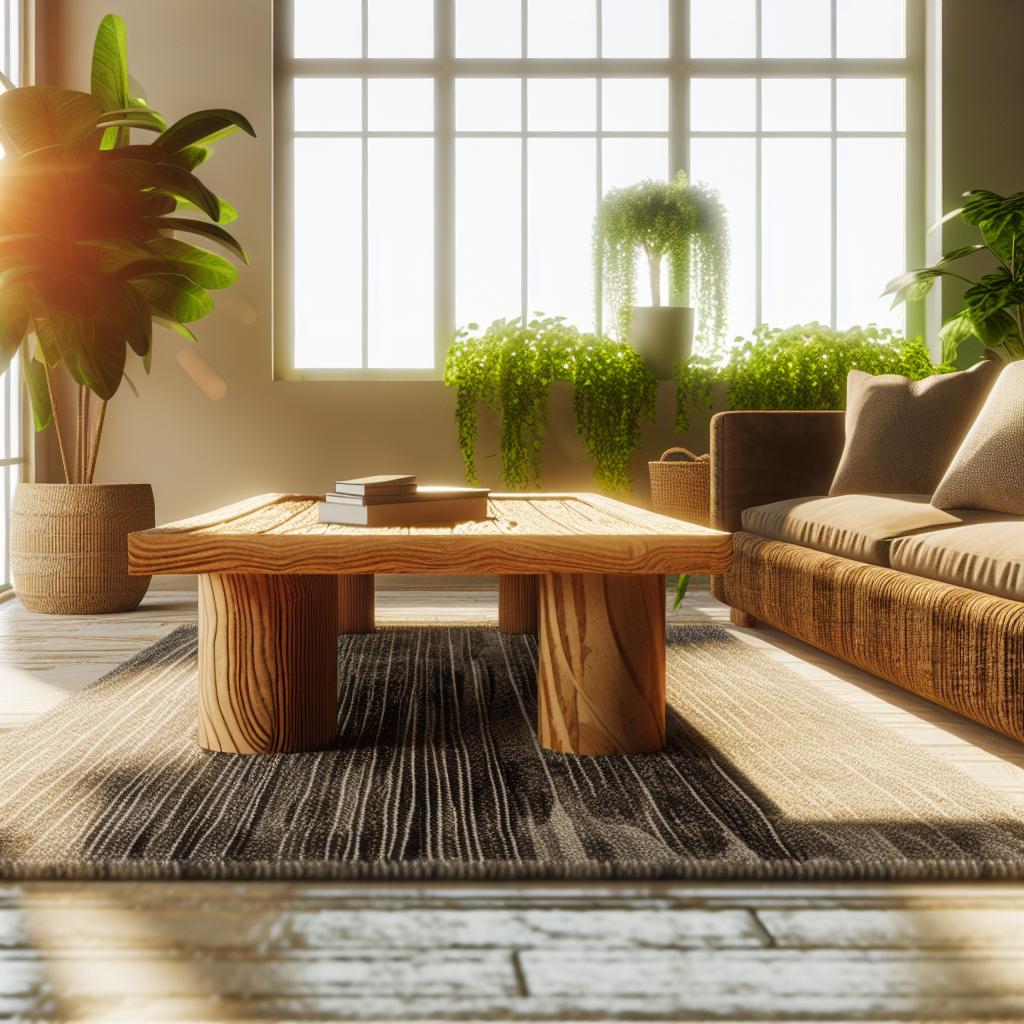Sustainable Furniture Materials: Are They Worth It?
- Sustainable furniture uses materials with fewer toxins, improving indoor air quality.
- It reduces carbon footprints by conserving resources and using materials like bamboo and reclaimed wood.
- Though initially costlier, sustainable furniture lasts longer, saving money over time.
- Common sustainable materials include bamboo, reclaimed wood, recycled metals; innovative materials feature bio-based plastics and mushroom-based options.
- Upholstery from organic cotton, linen, and hemp is eco-friendly.
- Leading brands like West Elm and IKEA prioritize sustainability, using certifications like FSC and PEFC.
- Affordable eco-friendly options are available from brands like IKEA and Target.
- Current trends include minimalistic and modular designs, driven by consumer demand.
- Certifications to look for include FSC, PEFC, GREENGUARD, and GOTS.
- Sustainable furniture aligns style with eco-conscious living.
If you're like me and love crafting and improving your home, you know that choosing the right furniture materials can make a big difference. But, are sustainable furniture materials worth it? This question is crucial as we aim to create stylish and eco-friendly spaces. In this post, let's explore if these materials truly benefit our health, environment, and wallets. Dive in to discover how sustainable choices can enhance your living space!
What are the Benefits of Using Sustainable Materials in Furniture?

When we talk about sustainable furniture, we often wonder if it's worth the switch. Let me tell you, there are lots of benefits of sustainable furniture that make it a smart choice.
How do sustainable materials contribute to a healthier living environment?
Sustainable materials often have fewer toxins. This can lead to cleaner indoor air. When we use traditional furniture, it might emit harmful gases. These gases are called "volatile organic compounds" or VOCs. They can make the air inside homes not so great. Sustainable furniture, though, often uses materials that release fewer VOCs. This means the air you breathe every day at home is much cleaner. So, choosing sustainable options helps make the air around you fresher and safer to breathe.
What are the environmental advantages of sustainable furniture?
Choosing sustainable furniture helps the environment, too. It reduces carbon footprints. This means there is less pollution from making and moving these items. Sustainable practices aim to use fewer resources. Regular furniture often needs a lot of water, trees, and energy to make. But sustainable furniture uses methods and materials that conserve these resources. For example, some eco-friendly furniture might use wood from fast-growing trees like bamboo. This way, we save trees and keep the forests safe.
Are there economic benefits to choosing sustainable furniture?
Let's talk about money. Sustainable furniture might cost more at first, but it can save you money later. This is one of the advantages of using sustainable materials. They tend to last longer. Unlike some cheap furniture that might break in a few years, sustainable furniture is often more durable. Over time, you buy less because you don't have to replace things as much. It's built to last! Plus, many sustainable items are crafted with great skills, which means they are sturdy and reliable.
Choosing sustainable furniture means you're investing in items that are hard-wearing and supportive of our world's health. By understanding the benefits, we can make better choices for our homes and the planet.
What Materials are Considered Sustainable for Furniture Making?

When we talk about sustainable furniture, the first thing to know is that these materials don't exhaust resources. They are sourced in a way that's kinder to the Earth. Some common options include bamboo, reclaimed wood, and recycled metals.
What are the Most Common Sustainable Materials Used in Furniture?
Bamboo is a standout sustainable material for furniture. It grows super fast and requires no pesticides. It's tough, too. This makes it perfect for furniture that lasts. Reclaimed wood is another superstar. It takes old wood and gives it a new life. This means fewer trees chopped down. Every piece of reclaimed wood has its own past and look. That can make each item special. Recycled metals are also becoming more common. Steel and aluminum can be reused without losing quality. This process uses less energy than making new metals. So, it saves on carbon footprint.
Are There Innovative Materials Being Used in Sustainable Furniture?
Some new materials are shaking things up in the eco-friendly world. Bio-based plastics are one of them. They come from plants, not oil. These plastics break down better, reducing waste. Then, there's mushroom-based furniture. Yep, you read that right. Furniture made from mushrooms, or mycelium, is not just a fad. Mycelium grows rapidly and shapes without causing harm. It's sturdy enough for selective furniture use, providing a green alternative.
How Sustainable are Natural Fabrics for Upholstery?
Upholstery matters, too. Organic cotton is a great choice. It skips the chemicals and pesticides in its growing process. Linen, made from flax plants, takes less water and is biodegradable. Hemp fabric is another eco-friendly choice. It uses much less water than cotton and is tough but soft. All these fabrics not only look and feel nice, but they also protect our planet.
Choosing these materials contributes to making our homes greener. When we know the materials, it's easier to make smart, eco-friendly choices. Sustainable materials aren't just a trend. They are a way to keep our Earth healthy by being responsible with our resources.
Who are the Top Sustainable Furniture Brands to Watch?

Which brands lead in sustainable furniture innovation?
West Elm and IKEA stand out in sustainable furniture. West Elm uses responsible materials, like FSC-certified wood. The company designs stylish yet earth-friendly pieces. They aim to reduce waste and save resources. IKEA, a global giant, focuses on sustainability, too. They design items using recycled materials and renewable energy. IKEA even created a "buy back" program to recycle old furniture. These brands are pioneers in green furniture design. Their work shows innovation and responsibility.
How do brands ensure their products are eco-friendly?
Certifications play a big role in eco-friendly furniture. Trusted labels like FSC (Forest Stewardship Council) and PEFC (Programme for the Endorsement of Forest Certification) ensure wood comes from responsible sources. These certifications mean trees are grown and cut down in ways that protect forests. They also help protect the animals and people who live there. Brands display these labels to show they meet high eco-standards. Seeing one of these on a product means you can trust it is sustainably made. It is a seal of approval for green furniture options.
Are there affordable options for eco-friendly furniture?
Yes, affordable options exist in eco-friendly furniture. Brands like IKEA and Target offer budget-friendly green pieces. IKEA's sustainable line is cost-conscious while reducing waste. Target has a collection that uses recycled and natural materials. These brands make it easier to go green on a budget. They show that saving the planet doesn’t have to cost a fortune. Moreover, you can find other affordable options that make use of innovative materials like bamboo. This way, you can furnish your space sustainably without breaking the bank.
How is the Sustainable Furniture Market Evolving?

What are the current trends in sustainable furniture design?
The sustainable furniture market is buzzing with fresh ideas. Two big trends stand out. First, there is the rise of minimalistic design. This style uses simple shapes and fewer materials. It aims to reduce waste, which makes it popular in sustainable design. Second is modular design. This trend uses pieces that fit together in different ways. You can change your furniture easily and often, which makes it last longer. Modular designs often use fewer resources and can adapt to smaller spaces, aligning with sustainable living principles.
Exploring these trends reveals how they save resources. Minimalistic design, in its essence, uses less material. It often highlights clean lines and simple forms that avoid excess. The result is less strain on resources and a focus on quality materials. Meanwhile, modular furniture provides flexibility. It allows users to replace or rearrange parts instead of buying new. This approach reduces the need to purchase more items, further cutting down waste. These designs are not just smart but also stylish, appealing to a broad range of consumers who value both aesthetics and sustainability.
How is consumer demand shaping the sustainable furniture market?
Consumer demand plays a huge role in the rise of sustainable furniture. More people want to live eco-friendly. They look for products that match their values. This desire for green products forces changes in the market. Manufacturers now offer more sustainable options. This shift means companies make furniture that respects the planet. It's a growing trend, driven by consumers who care about the Earth.
This demand isn't just a passing trend. It reflects a fundamental shift in how people think about buying things. Customers today ask tough questions about where their furniture comes from. They seek clear information on sourcing and manufacturing. As a result, companies respond by being more open about their practices. They also look for ways to reduce their carbon footprints. The result? A market that continues to grow as more people buy into eco-conscious living.
What challenges do manufacturers face in sustainable furniture production?
Although sustainable furniture is in demand, it is not easy to produce. Manufacturers face several hurdles. First, costs can be high. Sustainable materials often cost more than regular ones. They need special handling and care, which adds to production costs. Second, sourcing makes things tricky. Finding enough of these materials can be hard. Some might come from far away, increasing the carbon footprint. Last, there's supply chain transparency. Buyers want to know how their furniture gets made. This requires companies to trace their materials. Transparency takes effort and time, which can slow production.
These challenges are significant and require creative solutions. To tackle costs, companies sometimes invest in sustainable practices, hoping for long-term savings. For sourcing, they might partner with local suppliers. This reduces the distance materials travel and cuts down on emissions. As for supply chain transparency, technology plays a crucial role. Tools like blockchain help track materials' journeys from start to finish. Each of these steps reflects a commitment to sustainability. While not easy, they are essential for change in the furniture market.
The sustainable furniture market continues to evolve. Consumer demand pushes new design trends and production methods. As the market grows, so too will the solutions to these challenges. The future of furniture looks green, promising innovative designs and responsible practices.
How to Choose the Right Sustainable Furniture for Your Home?

Choosing the right sustainable furniture requires careful thought. First, think about the materials used. Materials like bamboo and reclaimed wood are strong choices. They grow back quickly or are reused, which helps nature.
Brand reputation also matters a lot when deciding. Some brands lead efforts in eco-friendly methods. Check if the furniture brand supports green rules and good practices. You can look up reviews to see how honest and reliable the brand is about their green claims.
When buying, consider a checklist to guide your choices. Include these key points:
- Material Sourcing: Are materials local or renewable?
- Brand Reputation: Does the brand have a history of green practices?
- Durability: Will the furniture last long?
- Waste Reduction: Is the design mindful of waste?
- End-of-Life Plan: Is the furniture easy to recycle?
With this checklist, you can balance needs and planet care.
How can Sustainable Furniture be Integrated into Different Home Styles?
Sustainable furniture can fit any home theme. Let’s get some ideas for different styles and ways to style sustainably.
Modern Style: Go for clean lines and less clutter. Opt for pieces made from bamboo or sleek, recycled metals. They bring a polish and help the earth.
Rustic Style: Use reclaimed wood furniture. A table made from old barn wood can add warmth and character. Pair with soft lighting for a cozy feel.
Boho Style: Mix and match colors and textures. Think about bean bags with organic cotton covers or a thrifted rattan chair. These add a playful yet eco-friendly vibe.
Minimalist Style: Choose simple furniture that serves many uses. A nesting table set or a convertible sofa can help save space and resources. Less is more here, making it a good fit for planet-friendly living.
Coastal Style: Light woods, fabrics in ocean shades, and wicker accents work well. Go for pieces made from driftwood or sustainably sourced seagrass. These efforts bring beach calm to your space.
Think about these ideas while keeping to your home’s style. It shows that green choices don't need to compromise beauty or feel.
Are there Specific Certifications to Look for When Purchasing Sustainable Furniture?
Certifications are key when choosing sustainable furniture. They prove green claims by showing that the piece meets certain rules. Let’s take a look at some vital labels to watch for:
-
FSC Certification: The Forest Stewardship Council (FSC) label shows wood comes from well-managed forests. This guarantees the trees are replaced or allowed to grow, keeping the forest healthy.
-
PEFC Certification: The Program for Endorsement of Forest Certification helps to ensure sustainable forest management. It protects biodiversity and controls harvesting.
-
GREENGUARD Label: This label ensures the furniture has a low level of chemical emissions. It makes for cleaner air at home.
- Global Organic Textile Standard (GOTS): This verification is key for fabrics. It ensures that textiles like cotton meet strict organic status from harvest to item creation.
Looking for these labels makes it easier to trust that you are making green choices. Each certification verifies the furniture you buy helps in caring for our world. It also ensures safer living spaces for your loved ones.
Selecting the right eco-friendly furniture is not just about style. With these pointers in mind, you can make choices that align with both taste and conscience. Sustainable furniture offers versatility, beauty, and care towards our planet—a worthwhile investment for all homes.
Conclusion
Sustainable furniture offers many benefits. It improves indoor air and reduces toxins. This eco-friendly choice lowers your carbon footprint while saving resources. You save money long-term because sustainable furniture lasts. Popular materials include bamboo and recycled metals, with new innovations like mushroom materials growing. Brands like IKEA lead with eco-friendly options, some at lower prices. Consumer demand is reshaping the market, driving trends like minimalistic designs. Choose wisely—consider sourcing, certifications, and style compatibility. Adopting sustainable furniture means making a choice for better health, and a better planet.







